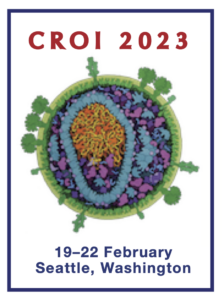Viral reservoir increases on long-term ART: new strategies for a cure
1 June 2023. Related: Conference reports, Cure-related research, CROI 30 Seattle 2023.
Simon Collins, HIV i-Base
 An excellent plenary talk by Janet Siliciano from Johns Hopkins University School of Medicine, Baltimore, reviewed how our understanding of the viral reservoir has developed over the last 25 years.
An excellent plenary talk by Janet Siliciano from Johns Hopkins University School of Medicine, Baltimore, reviewed how our understanding of the viral reservoir has developed over the last 25 years.
This residual pool of latently infected long-lived resting cells was discovered during the early years of ART. It prevents HIV treatment from eradicating the virus and is a significant barrier to an HIV cure.
These cells can proliferate by clonal expansion without being activated and are not affected by ART. They will however, rapidly activate and cause viral rebound if ART is stopped. The reservoir is established within weeks of initial HIV infection.
Until recently, researchers measuring the size of the reservoir using quantitative viral outgrowth assays (QVOA), showed that on suppressive ART the reservoir continues to steadily decline over many years, with a cellular half-life of 3.7 years. New data in 2023 show that this decline does not continue indefinitely but actually slightly increases due to cellular proliferation. [2]
The reservoir is therefore in a dynamic state of change. Over time, an increasing proportion of clonally identical cells harbouring defective HIV (due to large sections of internal deletion and hypermutation) become the majority in the reservoir. These single or multiple clones can also proliferate in response to antigen, to cause viral load to become detectable at low levels. In this case, changing or intensifying ART will not suppress viral load.
But even after 20 years on suppressive ART, a minority of cells carrying replication competent virus still persist in people on very long-term ART. And it is this minority of phylogenetically distinct minor variants, representing less than 1% of the viral reservoir, that cause rapid and substantial viral rebound if ART is stopped. These variants are not detected in viral outgrowth tests.
One optimistic implication from this new data is that rather than needing to activate the total viral reservoir, this component of curing HIV might only need to selectively target the subset of cells responsible for viral rebound.
In order to significantly delay viral rebound without ART, or to reduce it to a level that immune-based strategies might be able to control any rebound, the reservoir – estimated at 10 x 10(9) log cells – would need to be reduced by >5 to 6 logs. Modest reductions by only 1 to 2 logs only delay rebound by a couple of weeks. [3]
References
Unless stated otherwise, references are to the Programme and Abstracts of the 30th Conference on Retroviruses and Opportunistic Infections, 19 – 22 February 2023, Seattle and hybrid.
www.croiconference.org/search-abstracts
- Siliciano JM. HIV reservoirs: obstacles to a cure. CROI 2023. Oral abstract 25.
https://www.croiwebcasts.org/console/player/51661 - McMyn MF et al. Persistence of inducible replication-competent HIV-1 after long-term ART. CROI 2023. Poster 396.
https://www.croiconference.org/abstract/persistance-of-inducible-replication-competent-hiv-1-after-long-term-art/ - Peluso MJ et al. rebound dynamics following immunotherapy with an HIV vaccine, TLR9 agonist, and bNAbs. CROI 2023. Poster 435.
https://www.croiconference.org/abstract/rebound-dynamics-following-immunotherapy-with-an-hiv-vaccine-tlr9-agonist-and-bnabs/
This report was first posted on 7 May 2023.

